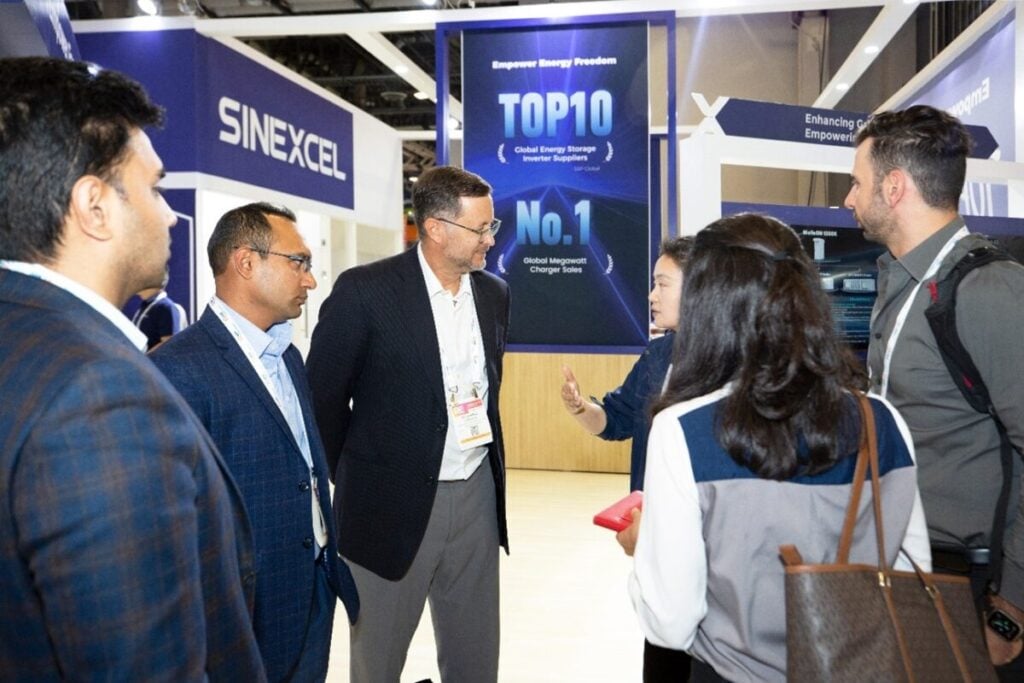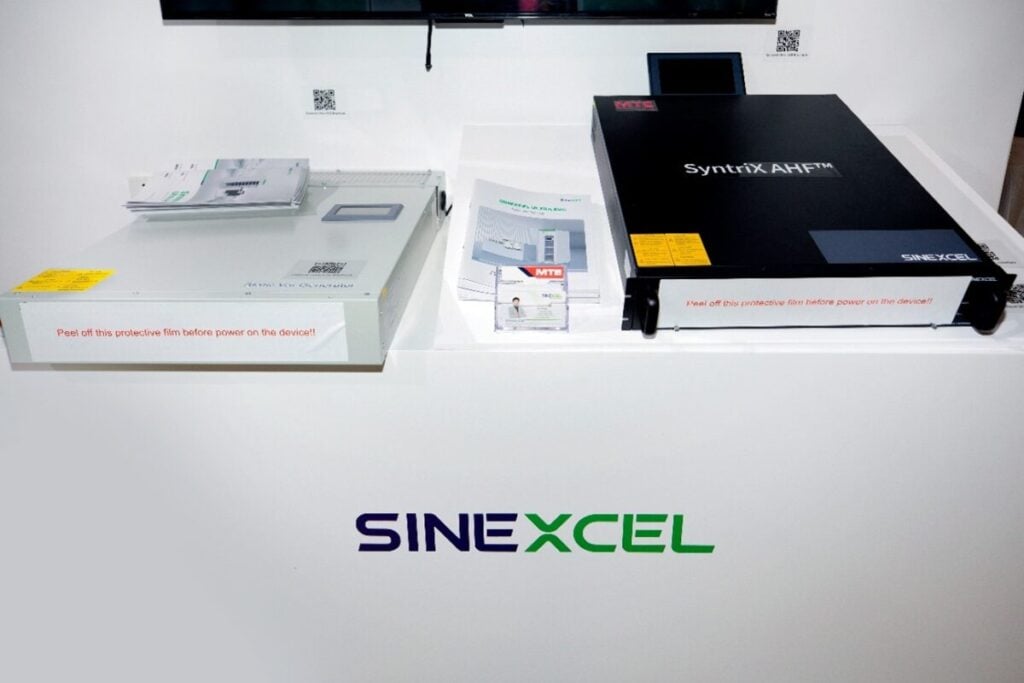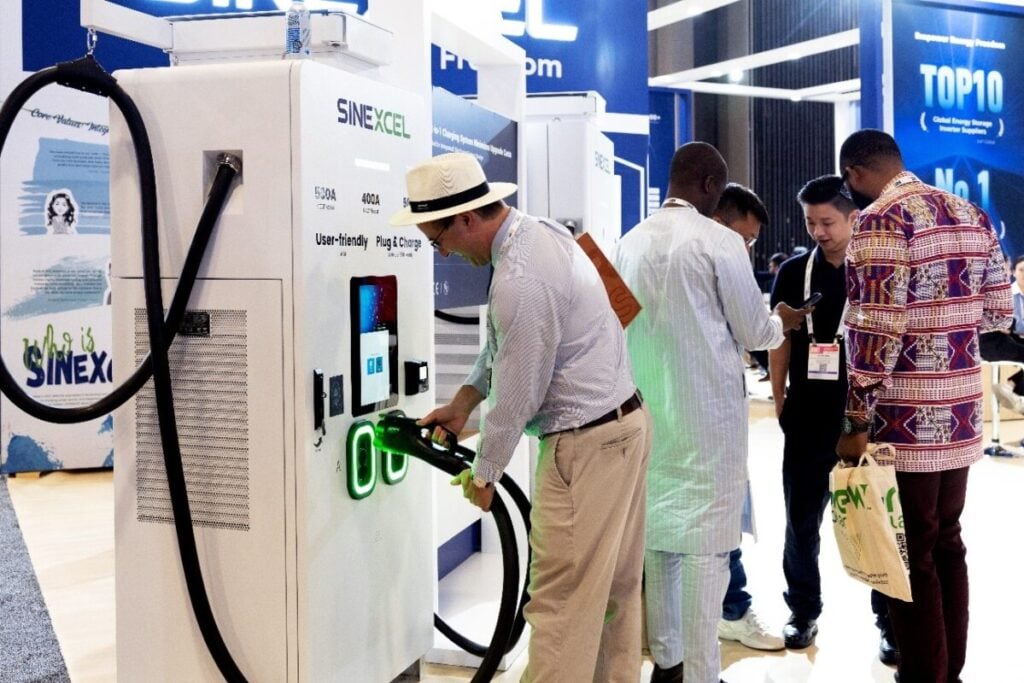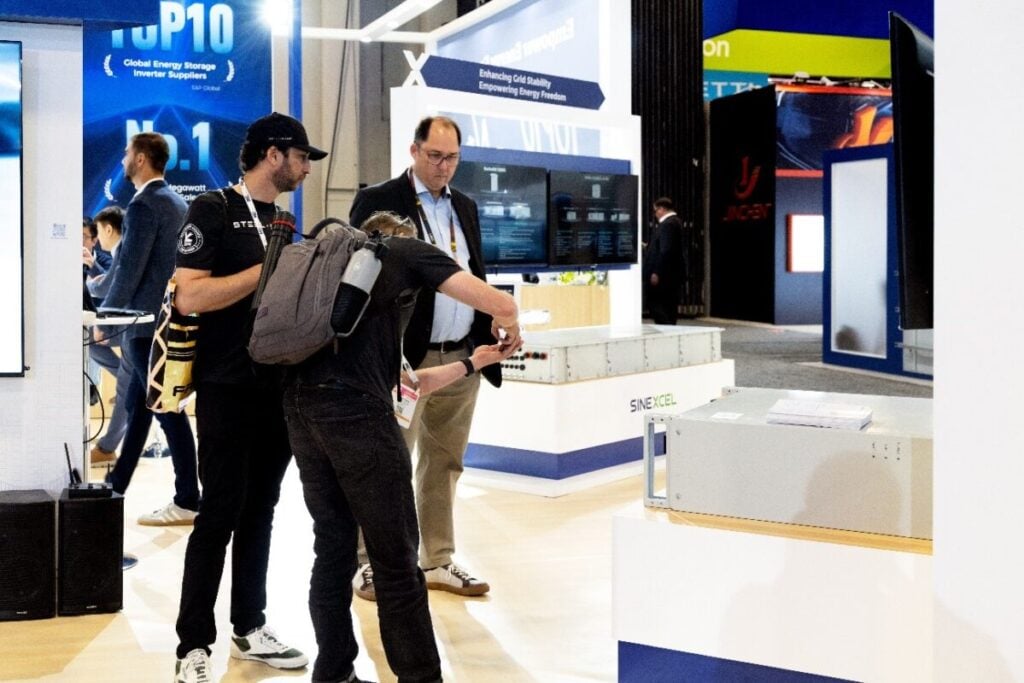
At RE+ 2025, Chinese energy solution provider SINEXCEL discusses modular design innovations, efficiency gains, and navigating an uncertain policy landscape.
When SINEXCEL first introduced its modular design harmonic filters to the global market, the concept was revolutionary. Drawing from the R&D team’s background at Emerson Green Power, where modular design had proven successful in UPS systems, the company became the first to apply this architecture to harmonic filters worldwide.
“The modular design concept was already there in UPS systems, but no one had applied it to harmonic filters before,” explains Alan Zhu, SINEXCEL’s power quality sales director, speaking at the recent RE+ trade show in Las Vegas. “We developed the world’s first modular design harmonic filter.”
That innovation, launched in 2009, has since become widely adopted across the industry. But SINEXCEL’s technological evolution didn’t stop there. In 2017, the company made another significant leap by transitioning from IGBT technology to silicon carbide (SiC) MOSFET switching architecture across its product portfolio.
Try Premium for just $1
- Full premium access for the first month at only $1
- Converts to an annual rate after 30 days unless cancelled
- Cancel anytime during the trial period
Premium Benefits
- Expert industry analysis and interviews
- Digital access to PV Tech Power journal
- Exclusive event discounts
Or get the full Premium subscription right away
Or continue reading this article for free

The Silicon Carbide Advantage
The move to third-generation silicon carbide MOSFET technology has delivered measurable performance improvements. According to Zhu, switching losses are significantly lower than with IGBT solutions, resulting in reduced heat generation and more compact designs.
“With silicon carbide MOSFET, we can achieve up to 99% efficiency compared to 97% with normal products,” Zhu notes.
“This 2% efficiency increase can save each module up to US$2,800 in energy consumption costs.”
In an industry where 0.5% efficiency improvements are considered milestones, SINEXCEL’s 2% gain represents a fourfold advancement over typical incremental progress. For utility-scale energy storage applications, where even brief outages during price spikes can result in months of lost revenue, such efficiency gains carry substantial commercial value.
The silicon carbide technology also enables significantly higher power density. Zhu claims SINEXCEL’s solutions achieve five to eight times the power density of European manufacturers, a critical advantage in space-constrained applications like data centres.
Modular Design Meets Market Demands
The modular approach addresses a fundamental challenge in power electronics: ensuring system reliability and ease of maintenance.
Traditional power electronic devices typically come in large, monolithic cabinets that can reach heights of two meters. When a component fails, the entire system goes offline.
“In the modular concept, if one module fails, only that module fails – other modules keep working,” Zhu explains.
“There’s almost no or very low downtime, and repair time is very quick. You can take out the failed module and replace it without affecting the rest of the system.”
This design philosophy extends across SINEXCEL’s product range, from harmonic filters and static VAR generators to EV chargers and power conversion systems (PCS) for energy storage. The approach could prove particularly valuable in data centre applications, where space constraints and uptime requirements are paramount.

Energy Storage and Grid-Forming Capabilities
Henry Cheung, general manager of SINEXCEL’s energy storage and microgrids business, positions the company’s solutions around what he calls “asset-backed systems” – installations that generate commercial value rather than simply serving as commodities.
“All ESS systems using our equipment should generate commercial value,” Cheung says.
“This requires compatibility with different batteries, different scenarios, and different business models.”
A key differentiator lies in SINEXCEL’s grid-forming capability, which enables systems to operate independently in off-grid scenarios. Through collaborative innovation with partners, SINEXCEL has achieved the world’s first application of a grid-forming energy storage system in a low-altitude logistics station—marking a remarkable industry breakthrough.
While the US market has been slower to adopt grid-forming technology compared to countries like Australia, Cheung sees growing potential as EV charging infrastructure expands and extreme weather events highlight grid vulnerabilities.
“Once the market realises the commercial value of grid-forming functions, people will buy it,” he predicts. “Just imagine EV charging facilities along freeways – you’ll need energy storage to support off-grid functions.”
Navigating Policy Uncertainty
The conversation inevitably turns to the challenging policy environment facing Chinese companies in the US renewable energy sector. Foreign Entity of Concern (FEOC) regulations and domestic content requirements have created significant uncertainty for international suppliers.
Cheung acknowledges the complexity while expressing support for domestic supply chain development: “We believe domestic content is a good trend because it helps create local employment. That’s why SINEXCEL is active in globalisation – we’re building teams outside China, in the US, Germany, Australia, and other regions.”
The company has been exploring partnerships to establish local assembly capabilities while leveraging China’s mass production advantages for core components. However, Cheung admits uncertainty about medium-term prospects: “In the short term, people are waiting. We’re waiting for clarity before making decisions.”
Despite policy headwinds, SINEXCEL’s decade-long presence in the US market provides a foundation for continued operations. The company has established relationships with partners and developed applications across multiple sectors, including commercial and industrial (C&I) installations, microgrids and utility projects for mining, AI data centre (AIDC) and other various operations.
Diverse Application Portfolio
SINEXCEL’s US project portfolio demonstrates the versatility of its modular approach:
- Data Centres: High-efficiency systems that can integrate with generators and provide backup power for AI facilities requiring a smooth, uninterrupted power supply.
- EV Charging Infrastructure: DC-coupled systems that reduce utility impact while providing energy buffering and microgrid capabilities.
- Commercial and Industrial: Peak shaving applications that generate direct commercial value through demand charge reduction.
- Rural Microgrids: Remote installations for agriculture, including greenhouse applications in California.
- Utility: Grid-forming energy storage systems that enhance grid stability, improve power quality, and support renewable integration.
- Mobile and Rental: Portable energy storage systems for construction sites and temporary power needs.

The company’s early entry into the US market, with its first EV charging-plus-storage installation in Pennsylvania dating to 2017, provided a pathway to gaining valuable operational experience and strong customer relationships.
At the same time, SINEXCEL is expanding its vision beyond standalone applications — advancing both AIDC solutions and integrated solar-storage-charging systems that combine renewable generation, energy storage, and EV charging within a unified platform.
For AIDC applications, SINEXCEL’s high-efficiency, modular design supports the growing energy demands of AI-driven data centers while ensuring reliability and scalability. Meanwhile, its solar-storage-charging solutions improve energy utilization and grid resilience, while reducing infrastructure costs for operators.
By leveraging its strengths in power conversion and modular design, SINEXCEL aims to build flexible, reliable, and scaleable energy ecosystems for asset-backed applications across distributed and utility-scale deployments.
Looking Forward
As the renewable energy industry grapples with unprecedented load growth driven by data centres and electrification, SINEXCEL’s focus on efficiency and modularity aligns with market needs.
The company’s silicon carbide technology and grid-forming capabilities position it for applications requiring high reliability and performance.
However, success in the evolving US market will depend largely on policy clarity and the company’s ability to adapt its global supply chain strategy to meet domestic content requirements. With established relationships and proven technology, SINEXCEL appears positioned to navigate these challenges, though the path forward remains uncertain.
The company’s emphasis on generating commercial value through its “asset-backed” approach may prove prescient as the industry matures beyond pure cost competition toward solutions that deliver measurable returns on investment.
In a market increasingly focused on load growth rather than just clean energy credentials, that commercial focus could prove to be SINEXCEL’s most valuable asset.
For more information, visit https://en.sinexcel.com/
